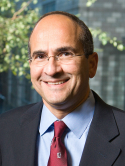Soft-tissue coverage of the hand following sarcoma resection Journal Article
| Authors: | Talbot, S. G.; Mehrara, B. J.; Disa, J. J.; Wong, A. K.; Pusic, A.; Cordeiro, P. G.; Athanasian, E. A. |
| Article Title: | Soft-tissue coverage of the hand following sarcoma resection |
| Abstract: | BACKGROUND: Hand-sparing surgery is now the most common option for sarcomas of the hand. The importance of obtaining widely negative margins has increased the complexity of operations and the importance of soft-tissue and bony reconstruction. The authors review the experience at a single institution of hand reconstruction following sarcoma resection based on prospectively collected data. METHODS: Data were collected for all patients undergoing sarcoma resection by a single surgeon. Variables evaluated included patient demographics, tumor pathologic findings, location, size, depth, grade, stage, method of resection and reconstruction, adjuvant therapies, complications, and patient outcomes. RESULTS: Fifty-five patients (30 male and 25 female) fulfilled eligibility criteria. The median age was 36 years (range, 1 to 80 years). The most common abnormalities were epithelioid sarcoma (n = 9), soft-tissue malignant fibrous histiocytoma (n = 8), synovial sarcoma (n = 6), and fibrosarcoma (n = 4). Flap reconstructions were required in 27 patients. The most common reconstruction method was a finger fillet flap in eight patients, followed by the radial forearm flap in five patients and the gracilis flap and skin grafting in three patients each. A suboptimal biopsy before presentation was strongly predictive of the need for flap reconstruction (p < 0.001). Nine patients had complications (delayed healing or skin necrosis, fracture, nonunion, epidermolysis, and tendon adhesion). No microvascular complications occurred. CONCLUSIONS: The choice of hand reconstruction method following sarcoma resection depends on a complete knowledge of options, risks, and benefits. Extensive use of a limited number of techniques by the authors' institution appears to contribute to excellent success and complication rates, with safe, reliable, and effective soft-tissue coverage. ©2008American Society of Plastic Surgeons. |
| Keywords: | cancer survival; controlled study; human tissue; treatment outcome; cancer surgery; fracture; survival rate; reconstructive surgical procedures; retrospective studies; major clinical study; mortality; cancer localization; cancer recurrence; plastic surgery; surgical flaps; united states; cancer adjuvant therapy; comparative study; cancer staging; outcome assessment; follow up; methodology; follow-up studies; neoplasm staging; cancer grading; neoplasm recurrence, local; pathology; retrospective study; biopsy; sarcoma; postoperative complication; fibrosarcoma; infant; tumor recurrence; cancer size; amputation; malignant fibrous histiocytoma; synovial sarcoma; epithelioid sarcoma; skin necrosis; soft tissue neoplasms; soft tissue tumor; skin graft; hand; neuroma; epidermolysis; pseudarthrosis |
| Journal Title: | Plastic and Reconstructive Surgery |
| Volume: | 121 |
| Issue: | 2 |
| ISSN: | 0032-1052 |
| Publisher: | Lippincott Williams & Wilkins |
| Date Published: | 2008-02-01 |
| Start Page: | 534 |
| End Page: | 543 |
| Language: | English |
| DOI: | 10.1097/01.prs.0000297637.22846.a0 |
| PUBMED: | 18300973 |
| PROVIDER: | scopus |
| DOI/URL: | |
| Notes: | --- - "Cited By (since 1996): 6" - "Export Date: 17 November 2011" - "CODEN: PRSUA" - "Source: Scopus" |
Altmetric
Citation Impact
BMJ Impact Analytics
Related MSK Work








